|
By Carol Bondy
Last week via Email and Facebook Readers reported feeling tremors. The tremors were felt over the previous week. On 7/7 a stronger tremor was reported a little after 8PM. The tremors were along 554, on Blue Earth Trail, along 142, 155 and 156. Some of the comments "Yes I’ve felt them all. Someone suggested that they may be sonic booms? Last week I felt two in the middle of the night. They felt like they were coming from underground." Yes! I felt it just after 8pm last night (Sunday). Off 554 on 142. I felt two, up on 156 by plaza blanca. One was 11:08 pm felt a big quick jolt a couple weeks ago here on 155, my closest neighbor felt it too. Yes, we felt all of these off 554 We contacted our resident Geologist, Kirt Kempter. He had not heard of any. USGS did not report any on their website. USGS reported quakes that are 2.5 on the Richter scale. Lesser tremors can be reported and they will track. We also contacted Bureau of Reclamation to see if there was a chance these could be related to the work being done in the riverbed. The answer was no. So if you felt a quake you or feel one in the future you might want to report it. Click on "Felt Something Not Shown" On USGS Thanks John Yewell for sharing that link.
0 Comments
Last week we mentioned the shifting sands that felt like walking on a waterbed..
A short video clip showing the liquefying soil the crews battled digging the pilot channel (credit Field Manager Christopher Torres)
Daria Roithmayr
Images by Erik Roithmayr The Rio Chama is officially on its way back into its original channel as of Tuesday evening. Workers from the US Department of the Interior Bureau of Reclamation literally broke ground on Tuesday afternoon to let the waters flow into a mile of empty river bed in Medanales. The re-diversion team removed a plug of sand that separated the rediverted river and the original channel to redirect water into the dry river bed. Water that minutes before had been flowing onto local residents’ fields and buildings now rushed into the bed, filling the channel and even making waves as the flow increased.
Several weeks ago, the river had jumped its tracks when area flash floods had deposited an immense amount of silt into an area just north of the La Madera arroyo. The mound of sand plugged the river and has been pushing the river flow onto local residents’ fields ever since.
To guide the river back to its original channel, workers first removed sand at the bottom of the plug, where the original river and new river happened to be close to each other. Workers cheered as water began flowing into the river bed that had been dry for three weeks. To deal with the rest of the plug, the Bureau team used conventional excavators to dig a twenty-foot pilot channel through the sand. At 6:30 on Tuesday evening, the Bureau opened the pilot channel and water began to flow through the plug into the river bed.
The Bureau anticipates that water flowing into the formerly dry bed will carry downstream all the sediment from the plug. Plans are to monitor the pilot channel and the river carefully, and gradually increase the river flow, which is currently at 100 cubic feet per second. As the flow increases, it will carry more sand and sediment from the plug and the pilot channel will widen over time..
Acequias downstream of the plug have been notified that the water will contain much sand and sediment, and mayordomos can decide when to begin using the water. Those upstream will benefit from the increased flows, as flows have been kept low to reduce damage from the river diversion. Torres expects residents’ fields to begin to dry out on their own, depending on weather, soil composition and the gradient of the field. “This is an ‘adaptive management’ process,” explained Torres.
The Bureau of Reclamation encountered an unexpected river roadblock early in the project. What had appeared to be firm sand swallowed a bulldozer, which took much effort to retrieve. The Bureau immediately sent for amphibious equipment that could operate in water and on springy sand. The process was time consuming: the amphibious dozer had to be packed up disassembled from Socorro and reassembled in Medanales. Predictably, the original timeline had to be scrapped. “As Mike Tyson says, everyone has a plan until you get punched in the face. We got punched in the face,” explained Chris Torres, the Field Manager for the Bureau of Reclamation. “We made up a lot of that time,” Torres said, speaking with great pride about his team out of Socorro. “An average of six or seven workers have been working nonstop for the last three weeks, working twelve-hour days even on the Fourth of July. They are so dedicated, I have to remind them to eat lunch, or insist that they knock off for the night.” Torres has had much experience with re-diversions, because the Rio Grande frequently jumps its tracks. As the water flowed with force into the river bed on Tuesday, a nearby resident who came to watch the proceedings jumped for joy and flashed the crew a big thumbs up. By Scott Wyland
The Santa Fe New Mexican A much-needed renovation of an aging dam that's crucial for storing and delivering water to the region's growers was supposed to be finished by 2026, but federal officials now say they must start over, adding years to the project. Having El Vado Dam offline and the reservoir drained since repairs began two years ago has caused logistical challenges for water managers who are unable to store excess spring runoff to use late in the summer growing season when it's often most needed. Instead, they must let the Rio Grande carry all the water downstream with the hope it will chip away at the hefty water debt owed to Texas — though that hasn't proved effective because much of the southward flow is lost to evaporation and faulty infrastructure. Now the prospect of having a vital water storage hub shut down years longer than anticipated is frustrating irrigation district officials in charge of supplying Middle Rio Grande Valley growers with the water they need to cultivate crops on the area's 60,000 acres of farmland. The U.S. Bureau of Reclamation found two key problems with the dam: Water was seeping through the old steel faceplate and the spillway was at risk of failing. The agency chose what it considered the cheapest, fastest way to fix the defects, which still would cost an estimated $33 million. A year into the renovation, the agency learned its methods not only weren't working to shore up the faceplate but were worsening the problem. "We are going back to the drawing board on alternatives for seepage reduction," Jennifer Faler, the Bureau's Albuquerque area manager, told Middle River Valley Conservancy District board members at a meeting in May. "We were not able to find technical solutions to the challenges we were seeing." The agency must come up with new plans to fix the 90-year-old dam, a task that will take three to six years before construction can begin, Faler said. She will do everything she can to streamline it so work would start in closer to three years, she added. Faler said the Bureau's team picked the most economical option to save farmers money. The next time around, they will pursue the option most likely to work, she said. "We're more inclined to choose more of an ironclad, tried-and true solution," she said. News of the dam's renovation possibly dragging out to the end of the decade irked a couple of board directors. "You're playing with people's livelihoods down here — all these farmers," said board director Brian Giron. "You guys went the inexpensive way. Look at what it's doing. It's costing the most now. I'm extremely disappointed in how long this is taking." Faler said she shared his disappointment. In 2022, the reservoir was emptied so crews could grout behind the faceplate, weld weaknesses in the structure and then place a synthetic lining over the entire face to better seal it. After the water was drained, engineers observed the dam was in worse shape than expected and the grouting was doing more harm than good, Faler told the district's directors. The grouting was deforming the faceplate, Faler said. And some of the angle irons that support the faceplate had become exposed. "We made the decision in 2023 to stop the grouting because we only foresaw worse and worse conditions for the faceplate if we continued grouting," Faler said. "We'll be looking at other alternatives." Much thought and research went into the project, she said. The Bureau's technical staff studied the dam and what needed to be corrected from 2007 to 2019, she said, focusing on the risks to the public. The biggest risks were determined to be "excessive seepage" and the aging spillway. Board director John P. Kelly said this sudden revelation from an agency that specializes in engineering and long-term planning puzzled him. "I find this highly unusual that the Bureau would switch horses in midstream, and we don't know which horse we're getting on," Kelly said. "We had multiple assurances that we're going to have water [in] 2027, 2028, 2029, and this just keeps moving out." Kelly asked if the agency would consider hiring a private consultant with dam expertise this time around. Faler said a panel of six outside experts reviewed the previous dam renovation while it was in the planning stage. "How in the world was this missed?" she said. "Or was it just impossible to have caught it?" Having El Vado Dam shut down has been troublesome for water managers because it's the only reservoir in the middle valley authorized to store the Rio Grande's "native" or natural water for the irrigation district. But that's about to change. The neighboring Abiquiú Reservoir soon will be permitted to hold native river water because the U.S. Army Corps of Engineer's water-control guidelines were recently revised to allow it to be stored there, said Army Corps spokesman Michael Graff. Before, Abiquiu could only store San Juan-Chama water, which is diverted from the Rio Chama Basin through a federal system of tunnels and dams until it flows into the Rio Grande. The Bureau allocates this water every year to farmers, pueblos and the cities of Santa Fe and Albuquerque. The final step to enabling Abiquiú to store native water is for the Corps to update its agreement with the Albuquerque Bernalillo County Water Utility Authority, Graff said. Jason Casuga, the irrigation district's CEO, said it will be crucial to have an alternative storage site while El Vado is out of commission. El Vado is expected to hold only a relatively small amount of native water while the Bureau pursues the new renovation plans, Casuga said, adding it won't be nearly enough to meet the district's storage needs. Which is why the district and the Bureau are negotiating with the water authority in the hope it will let the district use some of that storage space, at least temporarily, he said. Under the 86-year-old Rio Grande Compact, New Mexico must store the volume of water it owes Texas before it can add irrigation water to the reservoir, Casuga said. Otherwise, all the water from, say, the spring runoff must go downstream to Texas, he said. Casuga said he looks forward to El Vado being rehabbed so it can store a large quantity of water again. It will enable the district to be autonomous and not have to rely on others for storage, he said. "Right now, without the facility to store water, we're asking for permission from other places," Casuga said. With your support we will leap over this next hurdle and move forward better than ever! Your support means the world to us!
With Gratitude For the past decade, Moving Arts has flourished in our facility thanks to a remarkable partnership with TSAY Corporation as property owners. Their support has been key to our success, allowing us to touch countless lives through the power of creative and experiential learning. Thank you, TSAY Corporation for the incredible journey we’ve shared. A Time of Transition All good things must end, so it is time to say goodbye to our current location. We face a significant transition as we prepare to move out in January 2025. In search of our new home, we are imagining vibrant and functional possibilities as multiple options are in review. This change is an exciting opportunity and a challenging venture for Moving Arts. We are reaching out to our cherished community and dedicated families to help us navigate this pivotal moment. The Path Forward Our mission to explore, express, expand, through the arts, guides us during this time of change. For us to continue to help the young people of Northern New Mexico grow into future leaders, we need your help. Securing a new home is not just about finding a physical space; it’s about sustaining the heartbeat of our organization, preserving the programs that bring joy and growth to our participants, and maintaining a safe, nurturing environment for our young artists. How You Can Help We invite you to be a part of the next chapter in Moving Arts’ story by helping us raise $100,000 in 30-days to support this transition. Every donation, big or small, brings us closer to securing a new space and ensuring the continuity of our programs. Your financial support is crucial for covering moving costs, renovations, and maintaining our high-quality offerings. The Impact of Your Support Your support will profoundly impact Moving Arts and the community we serve. With your help, we can:
Join Us in Shaping the Future It is not lost on us that we are being asked to do exactly what we ask are students to do. To reach for a higher vision. To push through our growing pains. To trust and rely on the support of a strong community. To explore, express, expand! With hope and determination, we embark on this new journey. Moving Arts has always been more than a place to dance; it’s a family, a sanctuary, a beacon of creativity and resilience. With your help, we can ensure that this legacy endures far into the future. Please join us in shaping the future of Moving Arts. Your involvement, whether through a financial contribution, or participating in our fundraising efforts, is invaluable. Let’s move forward together, with the same spirit and passion that has defined Moving Arts for the past ten years. Thank you for believing in us and for being an integral part of our journey. New Mexico Wild
Taos, NM (May 22, 2024) – A proposal to aerially apply pesticides to kill native grasshoppers on federal public lands in the Rio Chama Watershed has sparked significant public outcry for the second year in a row. In January, the U.S. Department of Agriculture, Animal and Plant Health Inspection Service (APHIS) announced this year’s proposal, which is aimed at increasing forage for cattle. The public response to this project was overwhelmingly negative, with over 1,640 individuals voicing opposition during the public comment period. The affected area includes 25,000 acres in the Cebolla area of Rio Arriba County on primarily Bureau of Land Management (BLM) lands, along with some state land and private property. The area is popular for outdoor recreation, including boating and hiking, and includes the Rio Chama Wilderness Study Area (WSA) and the Chama Canyons Area of Critical Environmental Concern (ACEC). The spray would occur in close proximity to the Rio Chama Wild and Scenic River, the Chama River Canyon Wilderness, the Jicarilla Apache Nation, and an Important Bird Area designated by Audubon. APHIS proposes to use four different chemicals for the project: carbaryl, chlorantraniliprole, diflubenzuron, and malathion. Commenters emphasized a particular opposition to carbaryl, citing potential harm to non-target species. Carbaryl is highly toxic to insects, including native pollinators, as well as mammals, fish, birds, and larval amphibians. Carbaryl is also a likely human carcinogen and has been known to cause nausea, headaches, dizziness, anxiety, and mental confusion, as well as convulsions, coma, and respiratory depression. Additional public concerns revolve around the lack of transparency and public involvement in the decision-making process. Many individuals emphasized the need for a comprehensive analysis of the project’s impacts on a variety of sensitive resources, publicly accessible survey data that demonstrates a need for grasshopper control, and a thorough economic justification before any pesticide use is considered. They stressed that APHIS should develop scientifically sound survey plans and promptly make data available to the public. “As many New Mexicans know, the public lands within the Rio Chama watershed are treasured for their ecological, cultural, scenic, and recreational values,” said Bjorn Fredrickson, Conservation Director for New Mexico Wild. “Any proposal for pesticide use should be justified by a clear need for action, rigorous environmental analysis, and transparent public process. Despite constructive public comments on numerous deficiencies in the APHIS proposal, the agency has failed to meet any of these basic standards. Further, carbaryl’s adverse effects on both wildlife and human health make its aerial spraying over federal public lands completely unacceptable.” The New Mexico Environment Department also weighed in with concerns. “The proposed affected area in Rio Arriba County includes the Chama River Canyon Wilderness. The stream segments and wetlands in the Chavez Canyon, Ojitos Canyon, and the Rio Chama within the Chama River Canyon Wilderness are classified as Outstanding Natural Resource Waters (ONRWs),” said the Department in their comments. “Pesticide applications should avoid and provide adequate buffer to water bodies, wetlands and riparian zones, playas and internal draining wetlands (depressions), tributaries, arroyos, acequias and other drainageways to water bodies, and wetlands.” The public outcry underscores the importance of moving away from widespread use of harmful pesticides and toward sustainable solutions that protect biodiversity and public health, and a need for much improved transparency and public engagement in APHIS projects affecting federal public lands and resources. New Mexico Wild commends the BLM Taos Field Office for halting last year’s spray, citing the need for additional environmental analysis and public transparency. We are optimistic that our public land managers will make the same sound decision this year. Contact NM BLM State Office Director Melanie Barnes. Phone: 505-954-2000 email: [email protected] Contact the Taos Field Office - 575-758-8851 or email [email protected] Read Also - David Lightfoot weighs in on Grasshoppers By Jessica Rath Images courtesy of Jessica Rath The New Mexico Bureau of Geology & Mineral Resources, Aquifer Mapping Program, has been conducting a study of the aquifers in Rio Arriba County. On Tuesday, June 4, the initial results of the study relating to Abiquiu, Mendanales, and El Rito were presented at a public meeting at the Rio Arriba Rural Events Center. The presenters were Aquifer Mapping Program Manager Laila Sturgis and hydrogeologist Dr. Talon Newton. Project Consultant Jessica Johnston introduced the speakers. The study was funded by Representative Susan Herrera, and executed by the Research and Service Division of New Mexico Tech in Socorro. About 50 people came together to hear about the results of the study. This study is important, Ms. Johnston explained, because probably everybody in this area depends on groundwater for all aspects of life: for drinking, bathing, cleaning, potentially watering your livestock, etc., but we don't know how much water we have. We don't know what the aquifers look like. We don't know if they're getting recharged. And most importantly, we don't know if the water quality is good for drinking or for other uses. We want to look into the future and make sure our grandchildren and great great grandchildren have water available. But we don’t know how. Hopefully this will be the first part of an ongoing series of studies. Laila Sturgis is the aquifer mapping program manager at the Bureau of Geology. She explained that they measure groundwater across the state and that it’s free for homeowners through this program. Their goal is to serve rural areas that are not getting water monitoring support. The project was divided into three chapters, the Chama study area, the Abiquiu study area, and the Dixon study area. Most of the communities in Rio Arriba County rely on groundwater for domestic and municipal supply. Deep wells can be unpredictable, both in quantity (how much the well is able to pump) and in quality: often deeper wells have poor water quality. Shallow wells can be prone to drying during drought, or they can be contaminated from septic tanks and other things like that. So, shallow wells can be more reliable, but are more susceptible to contamination. Surface water is the primary water for agriculture. Rivers and streams in the region are highly connected to the shallow groundwater; it’s almost like one system. The goal of these studies is to find reliable water for more community long term development.
A sediment aquifer is water that's stored in the spaces between grains. These are loose river deposits, shallow deposits that are not consolidated into hard rocks. It's highly permeable, which means that water can easily move through the material. On the other side are fractured rock aquifers which are much less reliable. Those are the two most common wells in the state. One of the main ways groundwater is recharged in our state is through snow. When it starts melting, it can seep into the ground at a nice rate, and actually make it deeper into the ground. Rain events are usually flashier because water comes and goes really fast. So snow is really good for recharging our aquifers. The study measured 43 wells in the Abiquiú Valley for water depth, and sampled 42 wells for water chemistry. They tested for surface contaminants such as E Coli and for heavy metals, like uranium, and arsenic. Iron, which is frequently present, is a secondary maximum contaminant level. So it doesn't really have any health issues associated with it, but it could change the way the water tastes. It’s the same with manganese. Because of the possibility of pathogens like E Coli it is recommended to get one’s water tested. The results of the study will be published shortly, once the report is done. Please visit the New Mexico Bureau of Geology & Mineral Resources website, https://geoinfo.nmt.edu/, if you want to find out about the final conclusions of the study. The Bureau, which is located in Socorro, also hosts a Mineral Museum which has over 18,000 mineral specimens and is over 100 years old. From Moving Arts
Espanola, NM – Lindsay Angulo began seeking opportunities to explore her creativity and develop her natural artistic talent. As a Española Valley High School sophomore, she joined the Summer Leadership Program at Moving Arts. Since then, Lindsay has used Moving Arts as a launchpad for her own artistic endeavors. Over the course of the last two years, Lindsay has not only honed her artistic skills but also made a significant impact on the community. She completed two mural panels, the first being part of a multigenerational collaboration that will be installed at the Pathways Shelter in Española. The second, a commission by the Northern Rio Grande National Heritage Area (NRGNHA), will be installed at the Española site. This mural, depicting an Abuelo teaching the next generation about planting, serves as a powerful metaphor for Masterful Mentorship and the importance of imparting our knowledge to the next generation, a message that resonates deeply with the community. The mural, titled “El Portador de Semillas” or “The Seed Bearer”, will be officially unveiled Saturday, June 15, 2024. The celebration will include light refreshments from 2-4 p.m. at NRGNHA, 109 E. Paseo de Oñate, Española. Lindsay recently earned a spot to have her art displayed at the African American Performing Arts Center and won a Gold Key award for her portfolio submission through the New Mexico Scholastic Art Awards. “I have an insane ability of endurance to keep pursuing a mission or goal. If I’m truly dedicated to a project, I will not stop at any roadblocks and find different solutions to get me to my end goal,” Lindsay says. From earning accolades for her art pieces to spearheading the mural project in the heart of Española, Lindsay's artistic endeavors serve as a testament to the transformative power of creativity and determination. Additionally, Lindsay received the prestigious Davis Scholarship and has decided to attend Wellesley College in Massachusetts in the fall. Until then, Lindsay will join local master artist and sculptor, Cruz Lopez, in teaching visual art at Moving Arts. "We are immensely proud of Lindsay for her outstanding achievements and dedication to her art. She has not only learned tangible skills but also continues to inspire through her work and contribution to the community," says Roger Montoya, Creative Director at Moving Arts and CNN Hero. Roger, who served as Lindsay's mentor throughout the mural projects, including the contract negotiations, is a testament to Lindsay's talent and the impact of her art. Lindsays says, “I’ve had kids come up to me while I paint and tell me how cool it is that I’m painting with so many colors and patterns and that they wish they could paint as well. I feel warmhearted as I remember I used to be amazed by other artists when I was younger, and I hope they continue to be inspired to create in the future.” For additional information, you may contact: Contact: Carmelita Archuleta , Marketing and Communications Coordinator Email: [email protected]| Phone: 844-623-2787 From Northern New Mexico College Locally designed Parkinson’s glove could provide an affordable treatment option ESPAÑOLA, N.M. — Students from Northern New Mexico College’s (NNMC) engineering program and Española Valley High School’s (EVHS) Math, Engineering, Science Achievement (MESA) program are applying engineering skills they are studying to a project that could significantly improve the lives of Parkinson’s patients. Under the direction and mentorship of Dr. Steve Cox, Associate Professor/Engineering Technology at NNMC, and Española Valley High teachers Janice Badongen Patal-e and Lyne Salero, the students are designing a glove that applies small brief vibrations to the fingertips to alleviate symptoms of the disease. “I like the fact that this has the potential to improve someone’s life. It’s not just trying to achieve a grade,” said Anita DeAguero, one of two Northern students involved in the project. “It just makes it more exciting, and it makes you enjoy the work you’re doing a lot more.” Both DeAguero and Jafett Garcia, her partner on the project, have earned Associate of Engineering in Pre-Engineering degrees from Northern and are pursuing their Bachelor in Engineering of Electromechanical Engineering Technology. Both are currently interns at Los Alamos National Laboratory and are considering pursuing careers at LANL after graduation. Creating a Community and Educational Connection Minna Santos, whose husband Brandon was diagnosed with Parkinson’s Disease in 2014, suggested the project to Cox. Brandon had reached the highest dosage of his medication while his symptoms continued to worsen. Minna saw a story on the Today Show about researchers at Stanford Medicine creating a Parkinson’s glove that reduced symptoms such as freezing gait and tremors (https://www.today.com/video/new-vibrating-glove-eliminates-parkinson-s-tremor-157390405854). If further testing confirmed the results, researchers anticipated the glove would be on the market in two years. “I was hoping we could come up with a very affordable intervention for the motor symptoms of Parkinson’s, because I’m sure once this does come out on the market, it’s going to be very expensive,” Minna said. For Cox, this was a study project with practical applications and an opportunity to connect his NNMC engineering students with the MESA students he regularly works with. Garcia was already assisting Cox in that effort, and he and DeAguero both mentored the MESA students throughout the project. The Parkinson’s glove designed by Dr. Peter Tass and his team at Stanford Medicine stimulates the fingers with a random pattern of vibrations, which resets nerve cells that misfire in the brains of Parkinson’s patients. Twenty patients who participated in the first trial all showed improvement, some of it remarkable. The students set out to reverse engineer the glove created by Stanford. “We took the Stanford research and converted that research into code, and the code is the magic,” said Garcia, “It’s helping us to create the patterns and shuffles and necessary bursts that we need for the patient to have these mechanical vibrations through small DC motors.” The major challenges were writing code to create vibro-tactile vibrations to stimulate the nerves in the right frequencies and sequences, using a 3-D printer to build a wearable container for the circuit boards and creating a glove to hold the wiring to the fingertips that could be worn comfortably for two hours at a time (the duration for maximum benefit), which Cox called “a full-blown manufacturing problem.” “This combination of hardware, software and manufacturing is a big deal. We typically put them in silos: you learn about each of those, but it’s not until you get out into the real world that you realize this all has to come together if you’re going to make a product,” Cox said. “So making a product that integrates these three silos is a huge learning opportunity for our students. Those are life skills that will help all of them in their journey.” The teams created several prototypes, working to make the gloves more comfortable, more ergonomic and more efficient. The first microcontroller prototype was relatively large, requiring the patient to sit in a chair for the entire treatment. To make the gloves portable, they purchased and programmed an ATtiny 85, a microcontroller small enough to fit into a casing about the size of a smart watch. The prototype the teams developed could be produced for about $25. “It was not easy. We struggled trying to change it from that big thing to the little microcontroller,” Garcia said. “It is a process, and you have to be positive and persistent.” The MESA connection
MESA students Chelsea Sisneros, Dafne Rodriguez, Angel Zavala and Emilio Samaniego had more personal involvement with Minna and Brandon. Cox suggested this project for entry into the MESA U.S.A. competition, which had to address eliminating inequity thru human- centered engineering design. Minna shared information about Brandon’s situation with the students, who were eager to make a glove he could wear comfortably either sitting or standing, since sitting for long periods was difficult for him. They developed multiple versions based on Brandon’s feedback, striving to make the glove more user-friendly. “One thing I thought was really cool about the project is that it informed the kids about a real problem in the world and it put a face on it. It’s good to have kids challenged with a real problem that makes a difference,” Minna Santos said. “I think it gave more inspiration to the students,” said Badongen Patal-e, mathematics teacher at EVHS. “I’m very proud of them taking on the challenge. They could have just brushed it off, saying, that is not what we came for in this class. But they were committed to do it.” The class met with Brandon several times via Zoom, and even measured his hand using the platform. When Cox delivered the first of several prototypes to Brandon on July 15, 2023, his gratitude was evident. The students’ understanding of Brandon’s needs, especially in terms of getting the glove on and off by himself, greatly increased when Brandon was eventually able to meet with them in person. “The high school students had an amazing relationship with Brandon,” Cox said. “Clearly these kids have spent a lot of time with elders in their family. They were so gentle and patient and understanding, working really hard to make sure that they understood the quality-of-life issues affecting Brandon. That empathy led to changes in his symptoms.” After the students’ first Zoom meeting with Brandon, he was so energized he asked Minna to take him to Santa Fe for lunch. Not only was that a rare request, he read a magazine during the trip. He had not read anything for a couple years. “I think it was really inspiring to him to have someone interested in his problem and trying to solve it,” Minna said. The students’ commitment to the project was evident as they displayed their various prototypes and talked about working with Brandon and the thrill of seeing the coding they were learning put to practical use. “Imagine that you can’t do anything independently, you need help to even walk to the bathroom,” said Chelsea Sisneros. “There’s a lot of people we could help. I know a couple people as well. It really makes you think how it would be for you to be in that position.” “It started as just a class and then it turned into a real thing. We just kept going on with it and it got more and more interesting,” said Dafne Rodriguez. “It felt good knowing that what we’re doing can help a real person, instead of just being one of those little projects that you forget about in a week. Brandon reported that his tremors decreased after just a few days of wearing the glove, but the severity of his disease prevented him from consistently wearing the device two hours a day, limiting his progress. Badongen Patal-e and Salero were instrumental in the project’s success. The students had high praise for them, not only for their help on the Parkinson’s glove but for pushing them to excel academically on every level and using their own money to buy classroom supplies. “The teachers did an amazing amount of work helping me mentor these students,” Cox said. Steady Hands Wins in Competition The students won 1st place for their design brief in the statewide 2023 MESA competition (https://www.nmmesa.org/), and 2nd place for academic poster, prototype pitch, technical interview and overall project. Their high scores in competition against a half dozen other schools (some with multiple teams) are especially impressive considering this was the first time any of them had competed and they were sleep deprived for their presentation. Their prototype stopped working the night before, so instead of rehearsing the team ran to Walmart to buy parts and worked until 3 a.m. to repair it. In 2024, the original team, joined by Jeremy Vigil, Juan Andres Maestas, Jordan Martinez, Dylan Sandoval, Matthew Abeyta Jr. and Silvy Talamante Baca, went on to win one of the coveted New Mexico Governor’s STEM Challenge awards (https://newmexicostem.org/). In this competition, Industry Sponsors judge teams, with each company choosing their top team. Arcadis sponsored the EVHS STEM Team’s “Steady Hands” project, praising their research-based technical knowledge, methodologies for product development, testing, documentation and multiple iterations of product improvement. They also commended the students for their teamwork, each member’s investment in and deep understanding of the project and the empathy they brought to it. “We love that someone in the local community came to these students with a complex problem, a very personal problem, one that is not easy to solve – and the students chose to accept this challenge as their own. They embraced Mr. and Mrs. Santos in their hearts and the real suffering associated with Parkinson’s disease…They literally followed the full product development process until they had created the gloves Mr. and Mrs. Santos could previously only wish for. They created access to medical technology and improved quality of life! The Steady Hands project demonstrates the power of designing with empathy.” Deployment of the Prototype For these students, developing the glove was more about helping Brandon and other community members than winning awards. Most of the original team has been working with Cox, DeAguero and Garcia to improve and develop 10 more prototypes of the glove, made possible by support by STEM Santa Fe and the Encantado Foundation. Cox is working to get approval from Northern's Institutional Review Board to deploy those gloves in the community. He is also seeking grant funding to continue improving the glove, including further miniaturization and wi-fi capabilities. “Our vision is not to make a profit. It is to help people, to help the community, to actually help others that cannot afford expensive devices for Parkinson’s disease,” Garcia said. “I’m glad because these kids made it more than a competition, that they are not giving up,” Badongen Patal-e said. “Even though the competition is finished, they’re like still here, willing to help. So I’m challenging the students to do more, to improve more, and maybe join more competitions as a part of information dissemination.” Cox has two hopes from the Parkinson’s glove project. One is to design an effective and affordable glove for the community. The other is that this type of project will encourage the students involved to continue their STEM education at Northern. “I’m super proud of Northern, but unless we build projects with the high school, we’re going to remain an empty vessel. Jafett and Anita are the entire class,” Cox said. “So we need to change that pipeline. My bigger goal is renewing conversations with the high school, making Northern a relevant place. Courtesy of the Los Alamos Reporter Biologists from Los Alamos National Laboratory have been collecting birdsong audio files from the pale blue, long-billed bird that relies heavily on piñon-juniper woodlands, a prevalent habitat on Lab property. The efforts to monitor the pinyon jay, a native New Mexican species in decline, are to better understand its on-site presence and avoid impacts to the Lab’s mission deliveries. It's also part of the Lab's responsibility to steward its natural resources. The jay lives in groups of 50 to 300 and forms smaller colonies of lifelong nesting pairs during the breeding season. A single bird may collect and cache as many as 2,600 piñon seeds from their estimated 15- to 25-square-mile home range. With impeccable spatial memory, pinyon jays return to their hidden seed caches year after year. As they move about, jays disperse seeds that help sustain piñon tree regrowth, creating a continuous cycle of a healthy piñon pine ecosystem. Unfortunately, scientists estimate pinyon jay populations have declined approximately 85% between 1970 and 2014 due to a variety of environmental and anthropogenic impacts, according to the landbird conservation network Partners in Flight. "There's an incredible amount of uncertainty regarding the pinyon jay," said Ethan Ditmanson of the Lab’s Environmental Stewardship group. "By collecting data and information, we can minimize that uncertainty and better understand potential impacts to operations relative to an Endangered Species Act listing." The jay was petitioned by wildlife advocates in April 2022 for listing under the Endangered Species Act. The U.S. Fish and Wildlife Service is currently following its regulatory procedure to review the petition, and will ultimately determine whether the jay warrants federal protections. In November 2022, Lab biologists began a sitewide pilot monitoring study of the pinyon jay to understand what areas of the Department of Energy’s property the jays use for breeding and seed caching. Biologists are also identifying how Lab operations may be affecting the species, as well as potential impacts to Lab operations from an Endangered Species Act listing. The study began with biologists deploying autonomous recording units in suitable habitat around the Lab, which measures into the 11,000-acre range. They recorded positive jay vocalizations during the breeding and nonbreeding seasons, then followed up on the detections with standardized ground surveys. "We now know that pinyon jays are here year-round, so we are working to develop a better understanding of how they are using the landscape at LANL," said Jenna Stanek, also of the Environmental Stewardship group. "Such understanding will help ensure a beneficial balance between mission operations and compliance if the jay does receive federal protections." "Proactively monitoring this species will help us prepare for an Endangered Species Act listing, potentially minimizing operational impacts like timing delays and geographic access limitations, while also protecting the pinyon jay on Lab property," added Audrey Sanchez from Environmental Stewardship. The Lab is currently home to three animals protected under the Endangered Species Act: the Mexican spotted owl, Jemez Mountains salamander and southwestern willow flycatcher. Compliance requirements often result in additional project planning considerations and constraints, and the Lab works to balance operations and development while preventing adverse impacts to federally listed species. "We are fortunate to have such a diverse and rich ecosystem that supports many species," said Jenette Hyatt, senior director for the Lab's Environment and Waste Programs. "To me, it's reassuring that the manner in which we execute our mission is being reviewed to understand our impact on the natural environment and ensure the beauty and benefit of the LANL ecosystem endures for generations to come." Northern New Mexico College demonstrates commitment to becoming a learning environment where Latino and all students thrive
ESPAÑOLA, N.M. — Excelencia in Education, the nation’s premier authority on efforts accelerating Latino student success in higher education, announced today that President Hector Balderas of Northern New Mexico College has chosen to affiliate with the national network of Presidents for Latino Student Success (P4LSS). The network comprises a group of presidents and chancellors who have committed to making their campuses learning environments where Latino and all students thrive. Excelencia formed their network of common cause in 2011 and Presidents for Latino Student Success in 2014 to support institutional leaders who are transforming higher education to make our country stronger with the contributions, skills and talents of Latino college graduates. Programs and initiatives that work for Latinos support increased attainment for all students. Latinos are a young, fast-growing population, yet degree completion gaps have increased between Latinos and their White peers. Excelencia’s analysis shows that closing the gap in degree completion by accelerating Latino student success will strengthen America’s workforce and civic leadership. Their goal is 6.2 million degrees earned by 2030. Higher Education institutions in the P4LSS network are focused on advancing success for Latino and other low-income and first-generation students. Participants in their network have documented higher retention rates and double the Latino faculty representation found at other institutions. Through the P4LSS network, Balderas will collaborate with Excelencia and other postsecondary leaders to leverage collective expertise and resources, foster partnerships and amplify current efforts to accelerate Latino student success in higher education at the national level. “Institutional leadership focused on intentionally serving Latino, and all, students is the hallmark of the presidents and chancellors in this network," said Sarita Brown, co-founder and president of Excelencia in Education. “We are proud to catalyze and support them as they advance student success and grow talent for our country’s bright future." Balderas joins more than 150 leaders that belong to the P4LSS network and lead the nation in enrolling and graduating Latino students. Although the network represents only five percent of the thousands of colleges and universities across the country, the network enrolls 32 percent and graduates 34 percent of all Latino students in higher education. "It is an honor to join this outstanding group of leaders, who are dedicated to the success of Latino and Hispanic students across the nation," said President Balderas. "As the president of an institution that serves an overwhelmingly Hispanic and Indigenous student population, I am honored to learn and work side by side with this group, as we work to strengthen student success for our communities.” Excelencia is honored to make common cause with the action-oriented, trendsetting presidents and chancellors who have answered their national call to accelerate Latino student success in higher education and ensure America’s future. To learn more about the Presidents for Latino Student Success network and other institutional leaders across the country affiliated with Excelencia, visit https://www.edexcelencia.org/leadership/presidents-latino-student-success. ### About Excelencia in Education: In 2024, Excelencia in Education marks 20 years of service to accelerate Latino student success in higher education by promoting Latino student achievement, conducting analysis to inform educational policies, and advancing institutional practices while collaborating with those committed and ready to meet the mission. Excelencia has established a network of results-oriented educators and. policymakers to address the U.S. economy’s needs for a highly educated workforce and engaged civic leaders. For more information, visit https://www.edexcelencia.org/. About Northern: Northern New Mexico College has served the rural communities of Northern New Mexico for over a century. Since opening in 1909 as the Spanish American Normal School in El Rito, NM, the College has provided affordable access to quality academic programs that meet the changing educational, economic and cultural needs of the region. Northern is an open-admissions institution offering the most affordable bachelor’s programs in the Southwest. Now one of the state’s four regional comprehensive institutions, with its main campus in Española, Northern offers more than 50 bachelor’s, associate, and certificate programs in arts & human sciences, film & digital media, STEM programs, business, education, liberal arts, and nursing. The College has reintroduced technical trades in partnership with two local unions and five public school districts through its new co-located Branch Community College, the first of its kind in the state’s history. Northern is accredited by the Higher Learning Commission (HLC) and has earned prestigious program specific accreditations for its engineering, nursing, education, and business programs. Learn more at https://nnmc.edu/. |
Abiquiu NewsLocal News Stories Archives
July 2024
Categories |

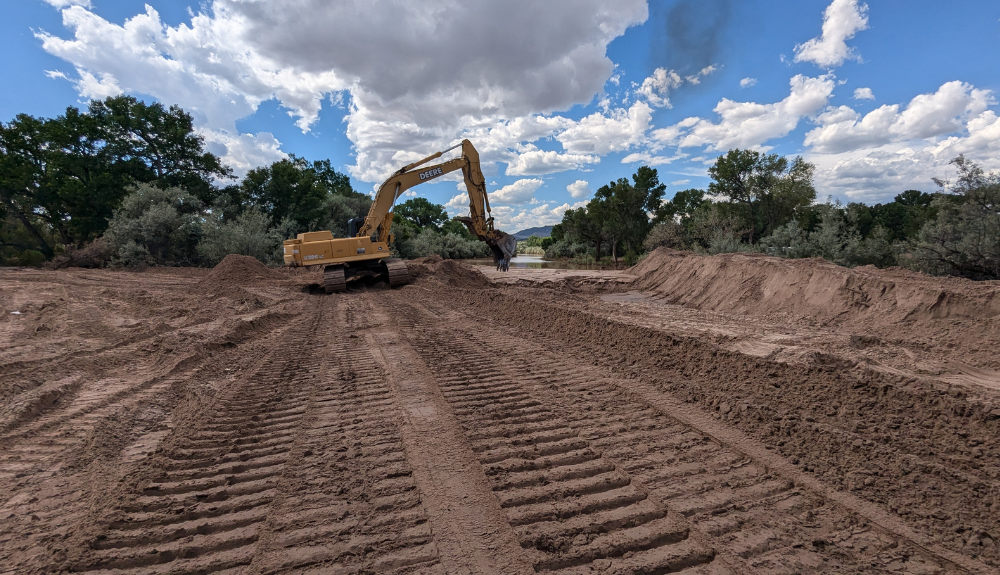
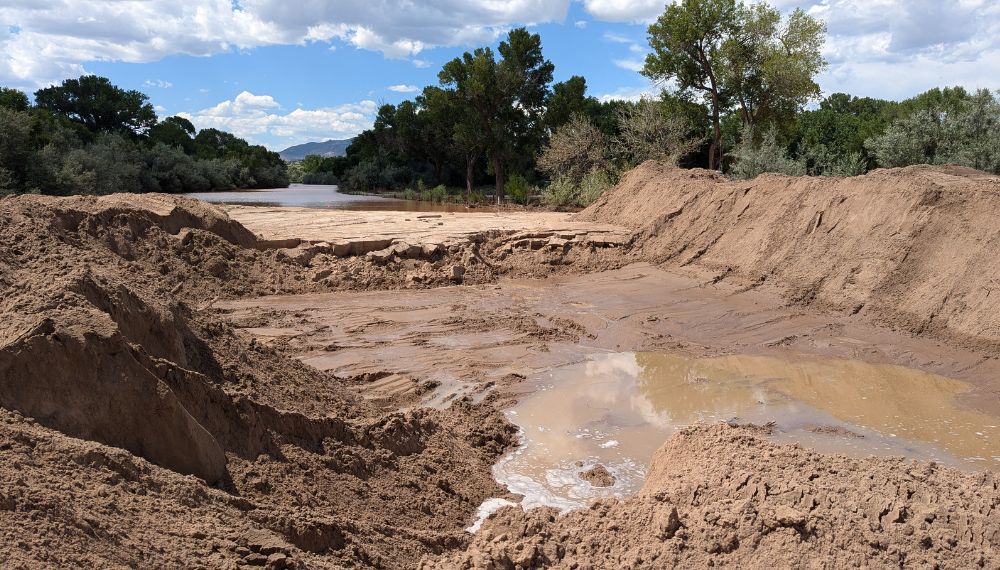


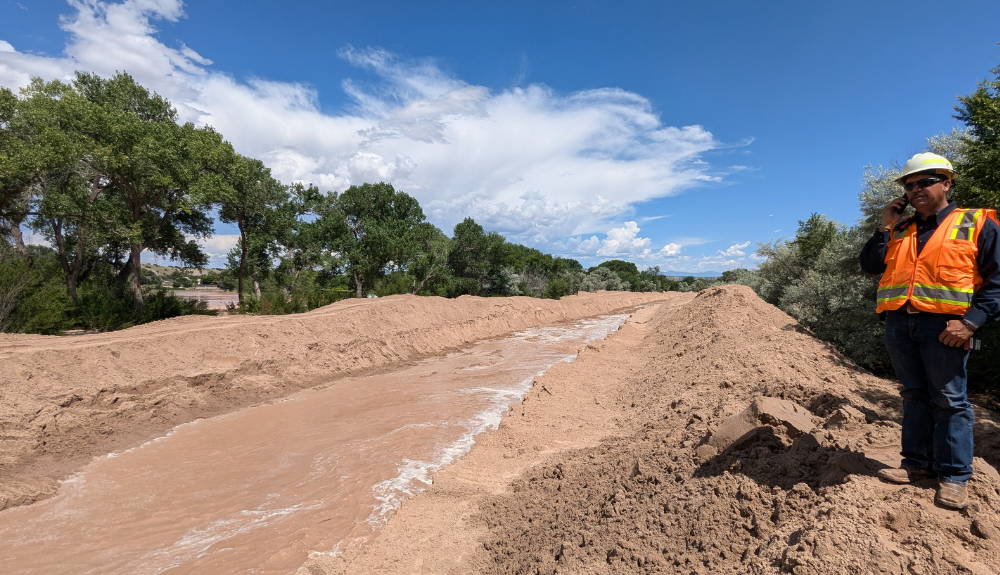
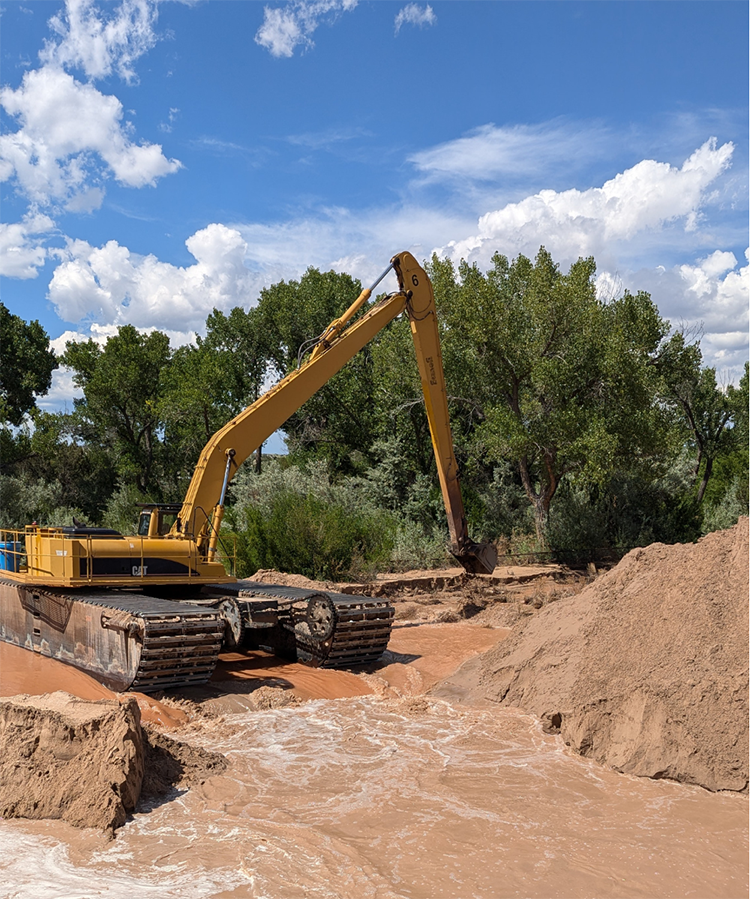




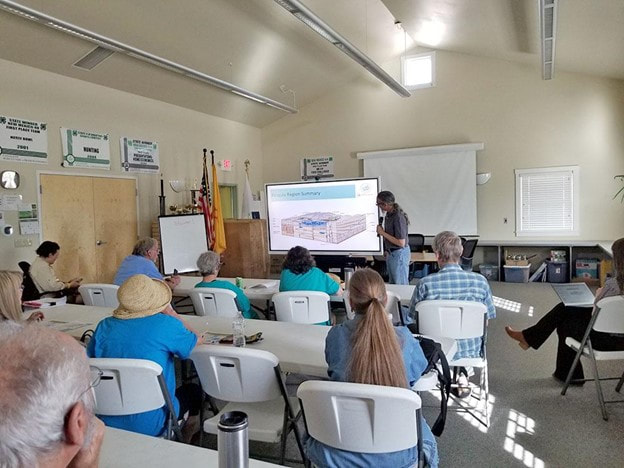


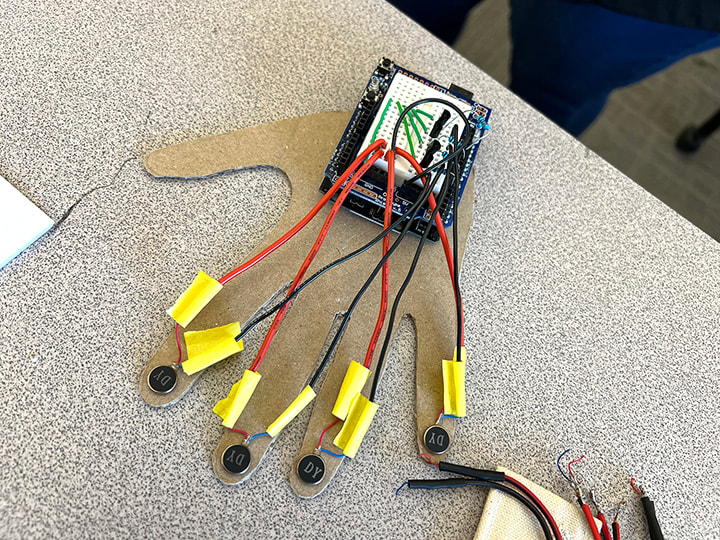

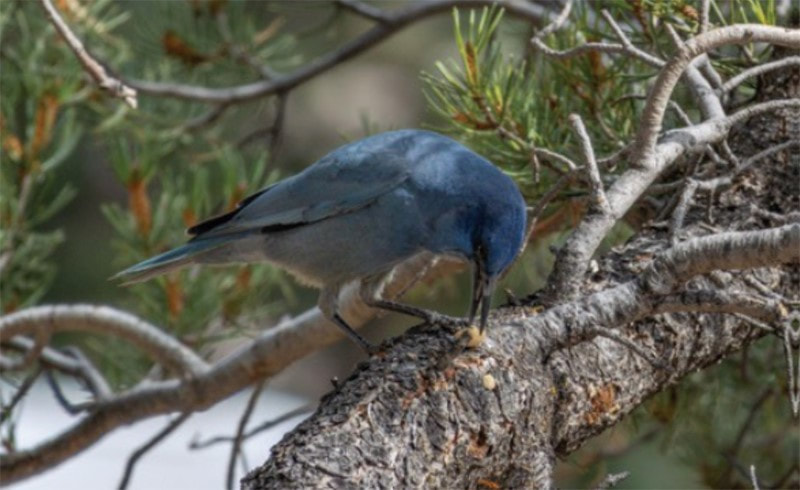

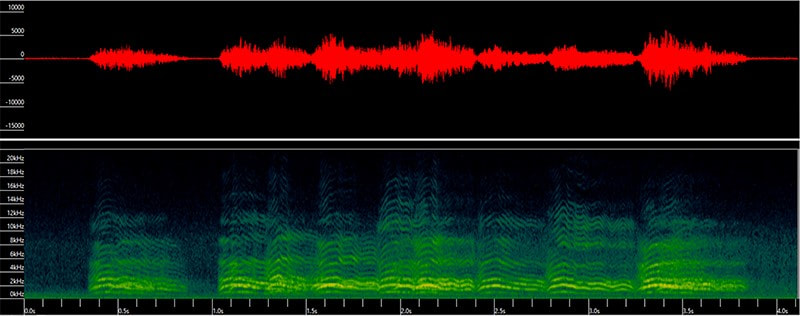
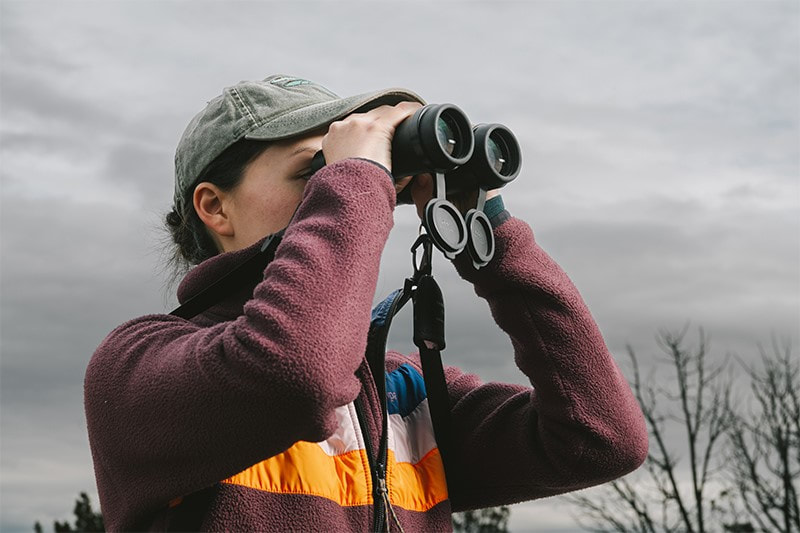
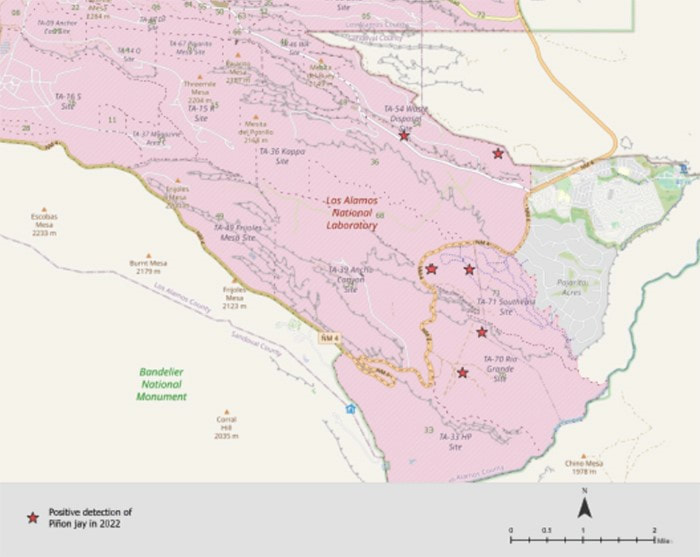
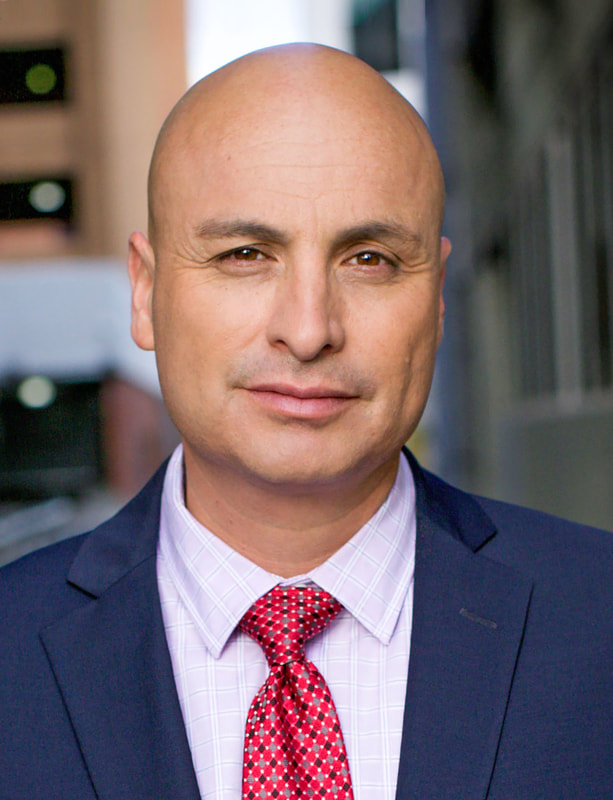
 RSS Feed
RSS Feed